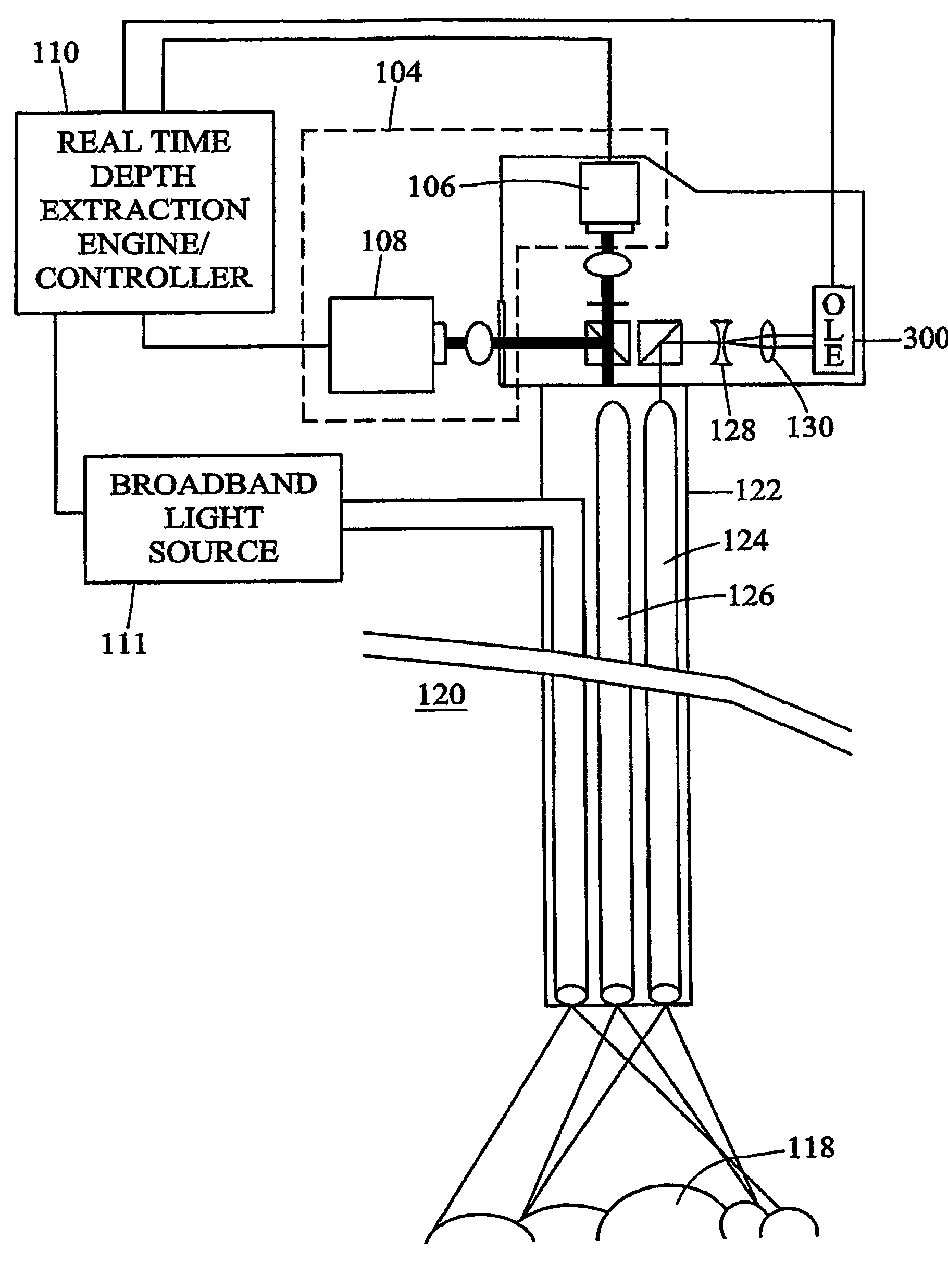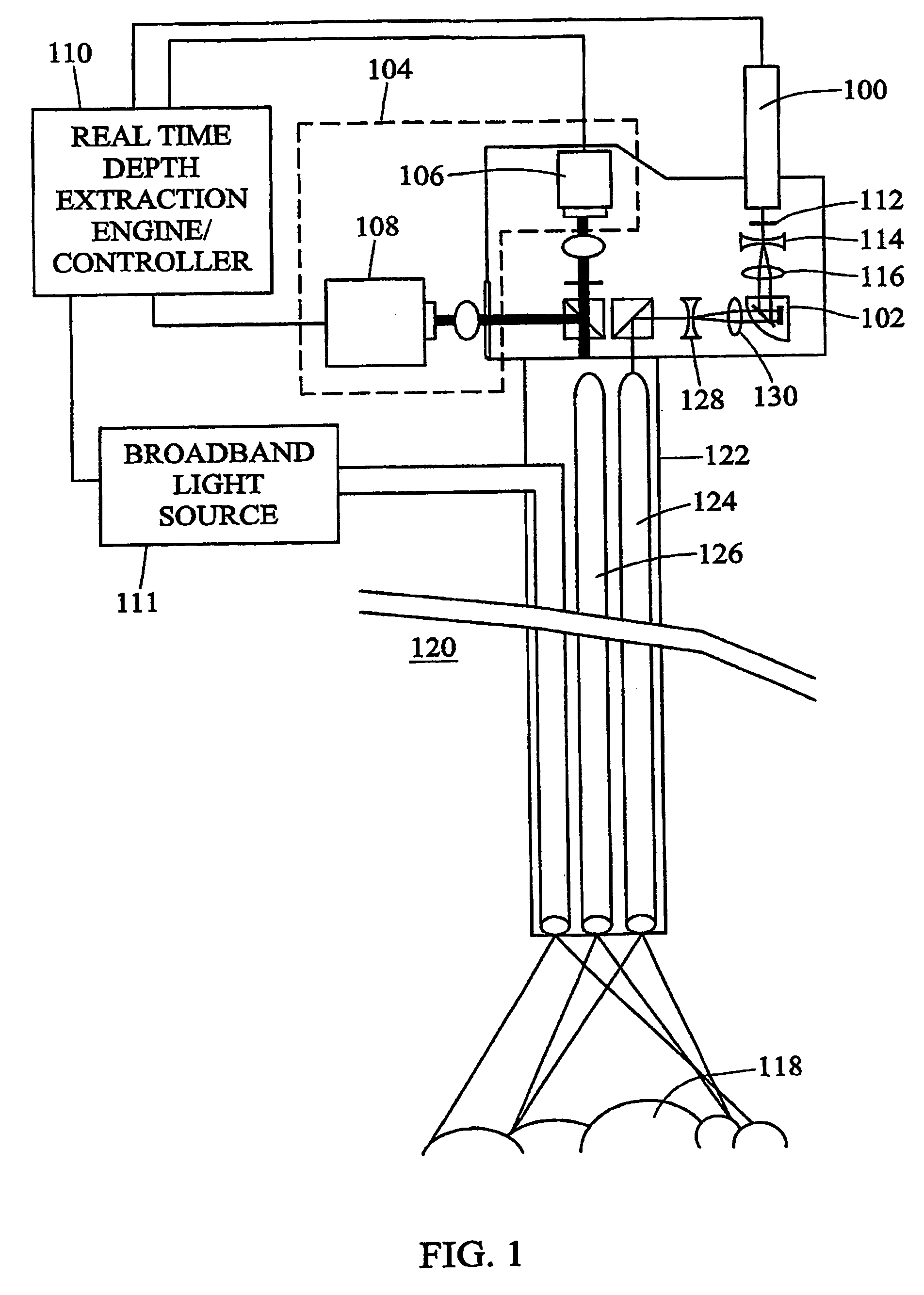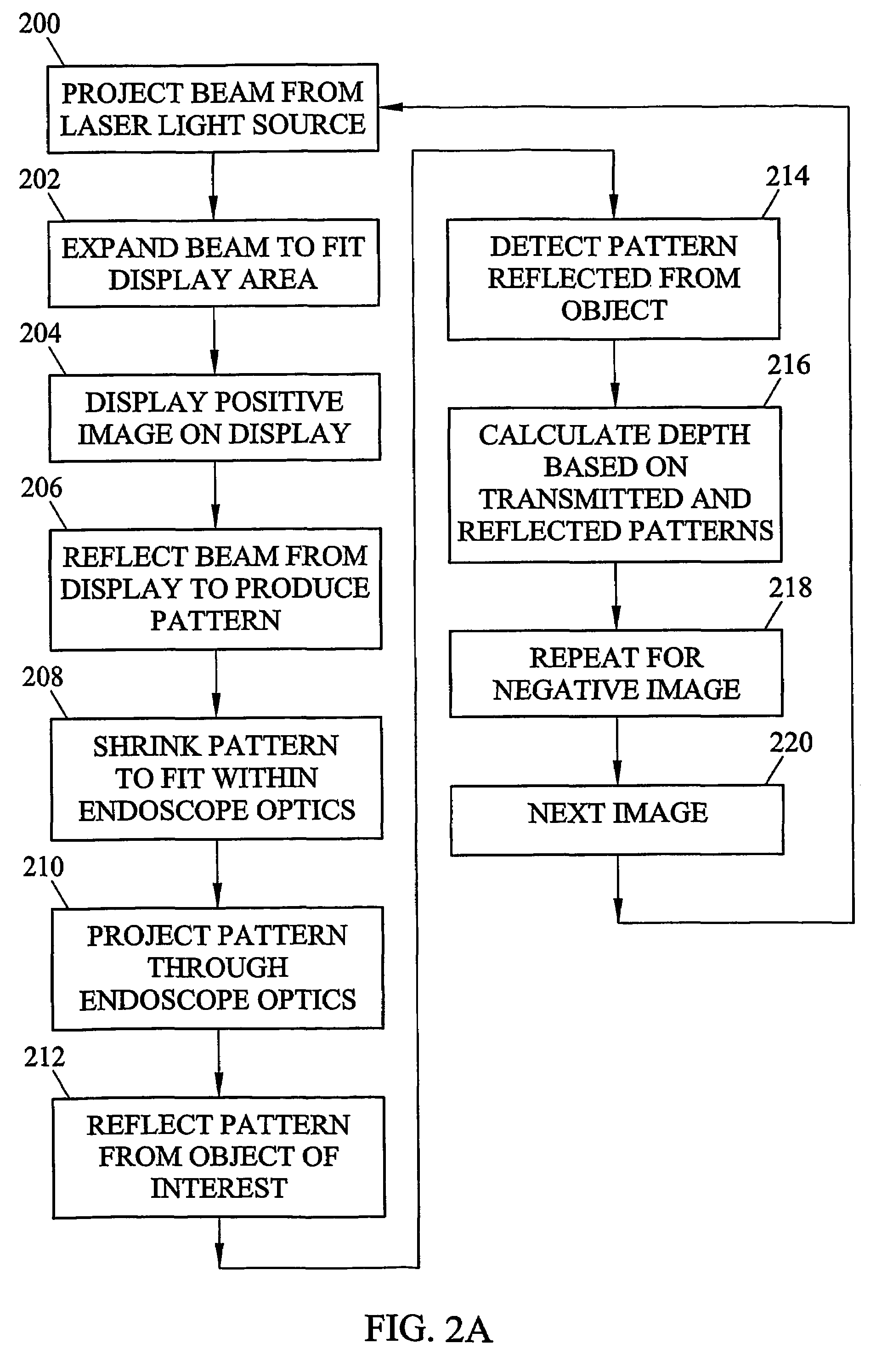Methods and systems for laser based real-time structured light depth extraction
a laser-based, structured light technology, applied in the direction of instruments, catheters, applications, etc., can solve the problems of incandescent light with poor photonic efficiency, single camera for both broadband light detection and calculation to determine the depth of objects are required to be extremely fast, and achieve the effect of reducing the number of required optical components and reducing the size of the real-time structured light depth extraction system
- Summary
- Abstract
- Description
- Claims
- Application Information
AI Technical Summary
Benefits of technology
Problems solved by technology
Method used
Image
Examples
Embodiment Construction
[0023]FIG. 1 illustrates a system for laser-based real-time structured light depth extraction according to an embodiment of the present invention. Referring to FIG. 1, the system includes a laser light source 100, a pattern generator 102, a detector 104 including cameras 106 and 108 and a real-time depth extraction engine / controller 110. Laser light source 100 may be any suitable laser light source, such as a laser diode. In a preferred embodiment of the invention, when extracting depth for surfaces within the human body, laser light source 100 comprises a narrowband light source of appropriate frequency for a reduced penetration depth and reduced scattering of light by the surfaces being imaged. The frequency range of light emitted from laser light source 100 may be in the visible or non-visible frequency range. A green light source has been found to be highly effective for imaging human and animal tissue. By reducing scattering and penetration of light, features in reflected struc...
PUM
 Login to View More
Login to View More Abstract
Description
Claims
Application Information
 Login to View More
Login to View More - R&D
- Intellectual Property
- Life Sciences
- Materials
- Tech Scout
- Unparalleled Data Quality
- Higher Quality Content
- 60% Fewer Hallucinations
Browse by: Latest US Patents, China's latest patents, Technical Efficacy Thesaurus, Application Domain, Technology Topic, Popular Technical Reports.
© 2025 PatSnap. All rights reserved.Legal|Privacy policy|Modern Slavery Act Transparency Statement|Sitemap|About US| Contact US: help@patsnap.com



